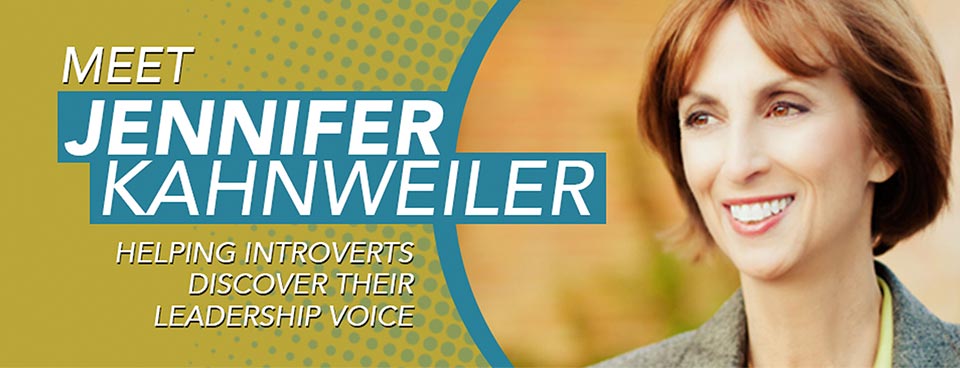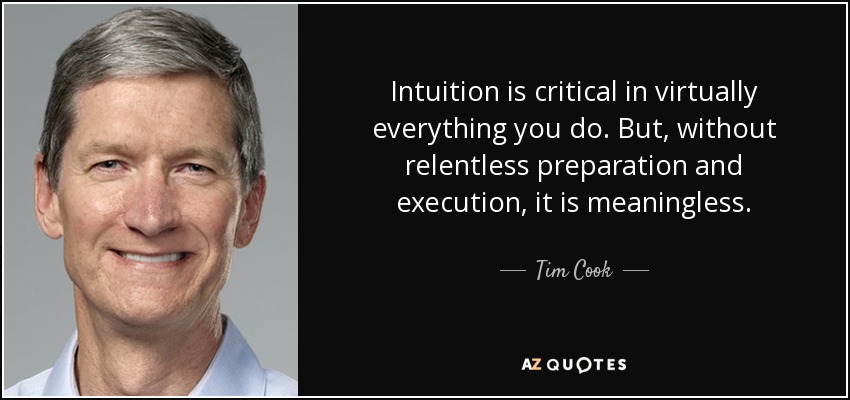Click here to return to Blog Post Intro

Introverts are continually asked to adapt to an extrovert-centric workplace that rewards being out there and on stage. Kahweiler explains that she has become convinced that introverts can be highly effective influencers when they stop trying to act like extroverts and instead make the most of their natural, quiet strengths.
Introverts seek depth over breadth. They like to dig deep—delving into issues and ideas before moving on to new ones. Introverts are usually quiet and reserved. Unfortunately, in modern society, this means that introverts are frequently misunderstood, undervalued, and underappreciated. Certainly, they are not usually identified as key drivers of influence. Yet ironically, these traits are precisely why introverts often make the best influencers of all—even in a world that has, until now, assumed that you had to make a lot of noise to make a lot of difference.
The 6 Strengths of Quiet Influencers
Quiet influencers make a difference by challenging the status quo, provoking new ways of thinking, effecting change, or inspiring others to move forward. Here are the six strengths introverts embrace to achieve an impact:
- Taking Quiet Time
- Preparation
- Engaged Listening
- Focused Conversations
- Writing
- Thoughtful Use of Social Media
For quiet influencers, being silent provides energy, increases self-awareness, and spurs creativity. Introverts return to quiet time frequently in order to recharge and reflect.
Quiet Influence Strength #1: Taking Quiet Time
Studies show that meditating—perhaps the most intense form of conscious quiet time—brings down blood pressure and slow breathing reduces anxiety. And that’s important because stress, distraction, unhappiness, and anxiety can keep you from being the best influencer you can be.
Introverts need solitude—or at least time away from actively interacting with others—to perform at their peak. This means that introverts should schedule and protect quiet times on their calendars. Make appointments with yourself as important as your appointments with others.
Just like any strength, overuse can become a weakness (or as I’ve heard it said, every strength has its shadow side). Life is about balance. So, it should be noted that taking too much quiet time can negatively impact your ability to influence others. How much introspection is too much? Keep this helpful phrase in mind: “Look back but don’t stare.”
Quiet Influence Strength #2: Preparation
Preparation often dovetails with Taking Quiet Time. Together, these two strengths form the core from which the other strengths grow.
Few Quiet Influencers achieve their goals alone. Most realize that they magnify their ability to make a difference when they strategically involve others. It takes preparation, planning, and management to involve others in a timely and effective manner.
Al Pittampalli, author of Read This before Our Next Meeting, calls meetings “weapons of mass interruption.” He says a leader’s most important decision is when to call a meeting and when not to do so. Overuse of Preparation can lead to analysis paralysis, lost connections, lost focus, and sabotoged confidence.
In The Introverted Leader: Building on Your Quiet Strength, Kahnweiler laid out the 4 P’s process: Prepare, Presence, Push, and Practice. Prepare is just one step of this process. You can only prepare up to a point before the second-guessing and doubt move in to replace confidence and motivation. It is important to move on and to be present with other people in your change efforts.
Quiet Influence Strength #3: Engaged Listening
Introverted leaders actually influence their more talkative teams to achieve higher levels of performance than more extroverted leaders do, according to recent research.
Quiet Influencers often find that the process of asking open-ended questions and then listening to the answers without judgment surfaces important clues to influence. Open-ended questions, such as, “Tell me… what’s happening in your world?” or “What is standing in the way of you reaching your next goal?” When they answer, say, “What about ______ concerns you? Can you give me an example?” Through engaged listening and probing in this manner, you’ll really understand the problem before recommending a perfect customized solution.
Ironically, a powerful tool for influencing people is silence. Often, a person will talk themselves out of a wrong decision without the listener saying a word. Vinay Kumar, the Executive Coach, says, “I listen with my whole body, not just with my ears. I listen less for what is said and more for what isn’t said. Without intentionally trying, I capture emotions, body language, tone, and undercurrents. All that combined tells me lots more than just what the person is saying through words.”
In Full Voice, Barbara McAfee states that when you learn to align what you say with how your voice and body say it, you also become a better listener who taps into “what people are saying beneath and between their words.”
As the “listener in chief,” you need to make sure that person you’re listening to doesn’t become a “venter in chief.” If you don’t ever ask questions that move toward solutions, you enable others to stay stuck in the problem. Engaged Listening engenders empathy, establishes credibility, and builds engagement–all of which help form the trusted relationships necessary for influence.
Quiet Influence Strength #4: Focused Conversations
Focused one-on-one encounters can have a deep and lasting impact, influencing the very direction of a person’s life. It is often the catalyst for provoking a new way of thinking and encouraging someone to move forward to take action. Quiet Influencers make the most of their focused conversations by setting up spaces and times to talk, strengthening their case, and being authentic and flexible.
In group settings, Ronnie Wilkins, a nonprofit executive, purposefully refrains from speaking or dominating the discussion. After his initial silence, if he thinks the group is missing an important point, he then contributes. When he does, others are more likely to listen because the voice has not been dominating the room.
AEIOU helps you remember these important steps:
- Acknowledge the other person’s positive intentions
- Express your thoughts and feelings
- Identify your proposal
- Outline the benefits of the outcome
- Understand each other and check
Overuse of Focused Conversations can result in an invasion of privacy, confounded problems, group think, and the limitation of words.
Quiet Influence Strength #5: Writing
Because introverts tend to prefer writing to talking, they often tap into writing as a powerful influencing strength. On the job, they opt for email over the telephone and are likely to prefer writing reports to making presentations. Writing offers them time to process and think.
When done well, the process of writing develops a depth of thinking and authenticity that jump off the page and can deeply influence others.
If you are challenged by the three strengths that take your ideas out into the world (Engaged Listening, Focused Conversations, and Thoughtful Use of Social Media), consider beginning your developmental journey with Writing.
Writing can contribute to your ability to influence in four ways:
- Clarifying your own stance
- Advocating your position
- Connecting with others
- Motivating others to action
Interpersonal connection lies at the heart of influence: if you don’t relate to others in some way, it’s unlikely you will influence them. Writing provides an attractive and powerful alternative for connecting with people, whether one-on-one or in groups. Quiet Influencers transform their innate writing skills into a powerful influencing strength by knowing and adapting to the audience, attending to the craft of writing, and making a persuasive case, considering your audience’s point of view.
Follow speaker and author Dr. Tony Alessandra’s “Platinum Rule”:

Use e-mail most effectively with the “sandwich technique”: write an e-mail providing all the necessary background for discussion. Then, have the conversation in person or over the phone. Later, summarize key points in an e-mail that the other person can reflect upon before committing to action. But remember, e-mail is rarely the most appropriate medium for solving problems or delivering bad news because it lacks personal connection.
You can miss the point of influencing others when you write so much for yourself in order to discover what you think that you get lost in your own words.
Quiet Influence Strength #6: Thoughtful Use of Social Media
As Seth Godin, Author & Entrepreneur put it, “In social media what matters are…real relationships. Networking is always important when it’s real and always a useless distraction when it’s fake.”
A thoughtful approach to social media helps to raise your Quiet Influence Quotient in 4 key ways:
- Use it to move people to action;
- Develop & grow relationships;
- Achieve visibility; and
- Teach & Learn
Making a difference in the world starts, quite simply, with building relationships.
Ann Barakat, an assistant professor for social media, says that social media can “supplement and enrich real-life relationships by enabling people to keep in touch, make plans, share… We establish relationships based on shared interests rather than proximity.” Effective Quiet Influencers often combine social media and face-to-face relationship building techniques.
The greatest influencers come to social media as “givers” not “takers.” The givers “think about what they have to offer to people without expecting something in return. They share business referrals, promote colleagues, and recommend resources and ideas.” The “takers” use social media “as a megaphone to broadcast sales spam.”
“Know what your objective is before you plunge into the social media world,” says social media expert Barbara Giamanco. “Technology is like putting gas in the car. It helps drive the strategy, it is not THE strategy.”
You need to control your online reputation. Be proactive in keeping your information current and relevant. It is now standard for people to do a search for you online before a first-time meeting or phone call. Write regularly about what you know. Be authentic and authoritative.
The secret of a successful media strategy is moderation. When you overuse it at the expense of other strengths, you may limit your opportunity to influence others. Specifically, overuse takes the form of information overload, ignored audiences, device addiction, and “one-way by the wayside.”
Social media allows you to develop relationships with people who you may not otherwise connect. An “addiction” to social media, however, can strain relationships with those physically near you.
Making a Quiet Difference
Consider these steps:
- Sketch out a brief influencing plan or develop a more elaborate one to address your influencing challenge.
- Sit with it for a few days.
- Run it by someone you trust and then adapt it as you see fit.
- Take action and reward yourself for moving forward on your Quiet Influencing journey!
Savor each moment of success and learn from things that don’t go exactly as planned. As the Spanish expression goes, it’s “poco a poco”—or little by little. Don’t get overwhelmed and think you have to try all these new ideas at once. Persevere along the journey one step at a time instead of trying to make a wholesale change right away.

